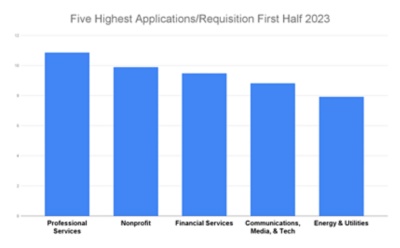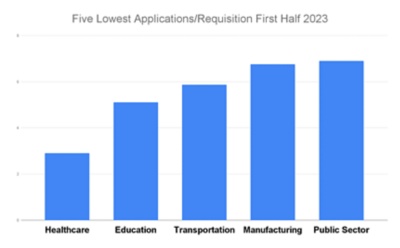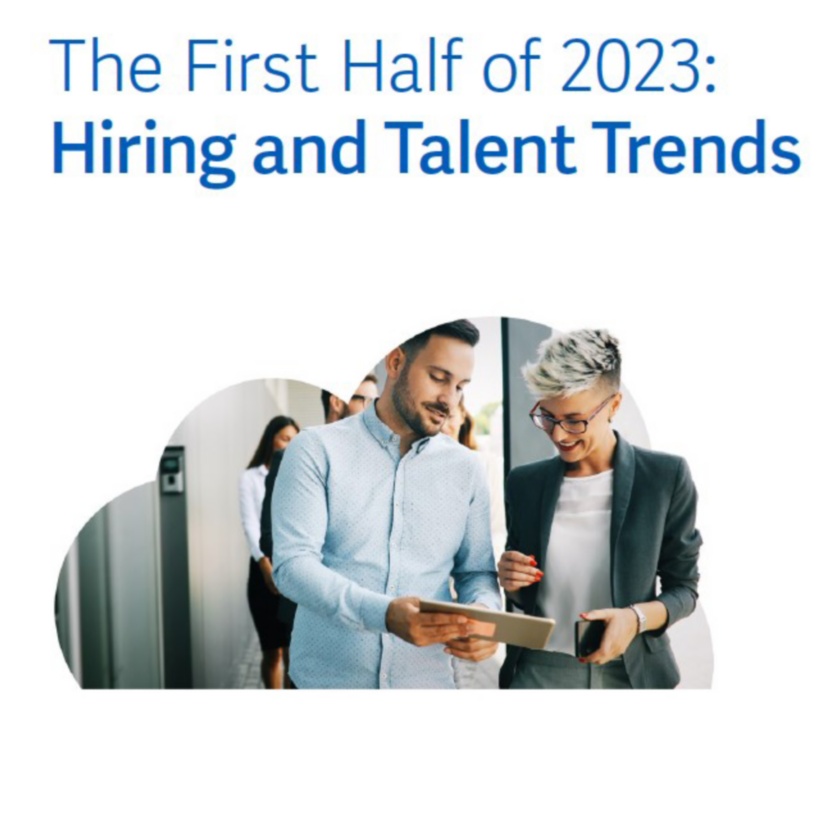Key Hiring and Recruiting Trends
In May of 2023, the Bureau of Labor Statistics reported more than 9.8 million job openings in the U.S. Workday Recruiting processed 2.2 million U.S. job requisition transactions in May, representing nearly 22% of all U.S. job openings that month. If current rates hold, Workday is projected to process more than 36 million requisitions, 266 million applications, and 24 million offers/employment agreements (EAs) in 2023. The size and quality of our dataset allows us to have one of the most expansive, real-time views of global hiring trends playing out in the market today.
In the first half 2023, Workday Recruiting processed:
- 18 million job reqs (15% decrease compared to the first half of 2022).
- 133 million job applications (30% increase compared to the first half of 2022).
- 12 million offers and EAs (9% decrease compared to the first half of 2022).
Looking at Q2 2023 in particular, we processed:
- 8.6 million job reqs (20% decrease compared to Q2 2022).
- 66.4 million job applications (30% increase compared to Q2 2022).
- 6.2 million offers and EAs (13% decrease compared to Q2 2022).
Even though applicant volumes have spiked, the number of interviews scheduled decreased in the first half of 2023 compared to the same period last year, another indicator that companies are being hyperselective from the very beginning of the hiring process.
Globally, we saw a smaller decline in requisitions and higher application growth compared to the U.S., indicating greater hiring resilience. While there is variability in hiring based on country, in aggregate, our customers outside of the U.S. did see declines in requisition volume but at a lower rate. Look for our full report coming soon with more details, including the five countries that saw the most volume in reqs and applications.












